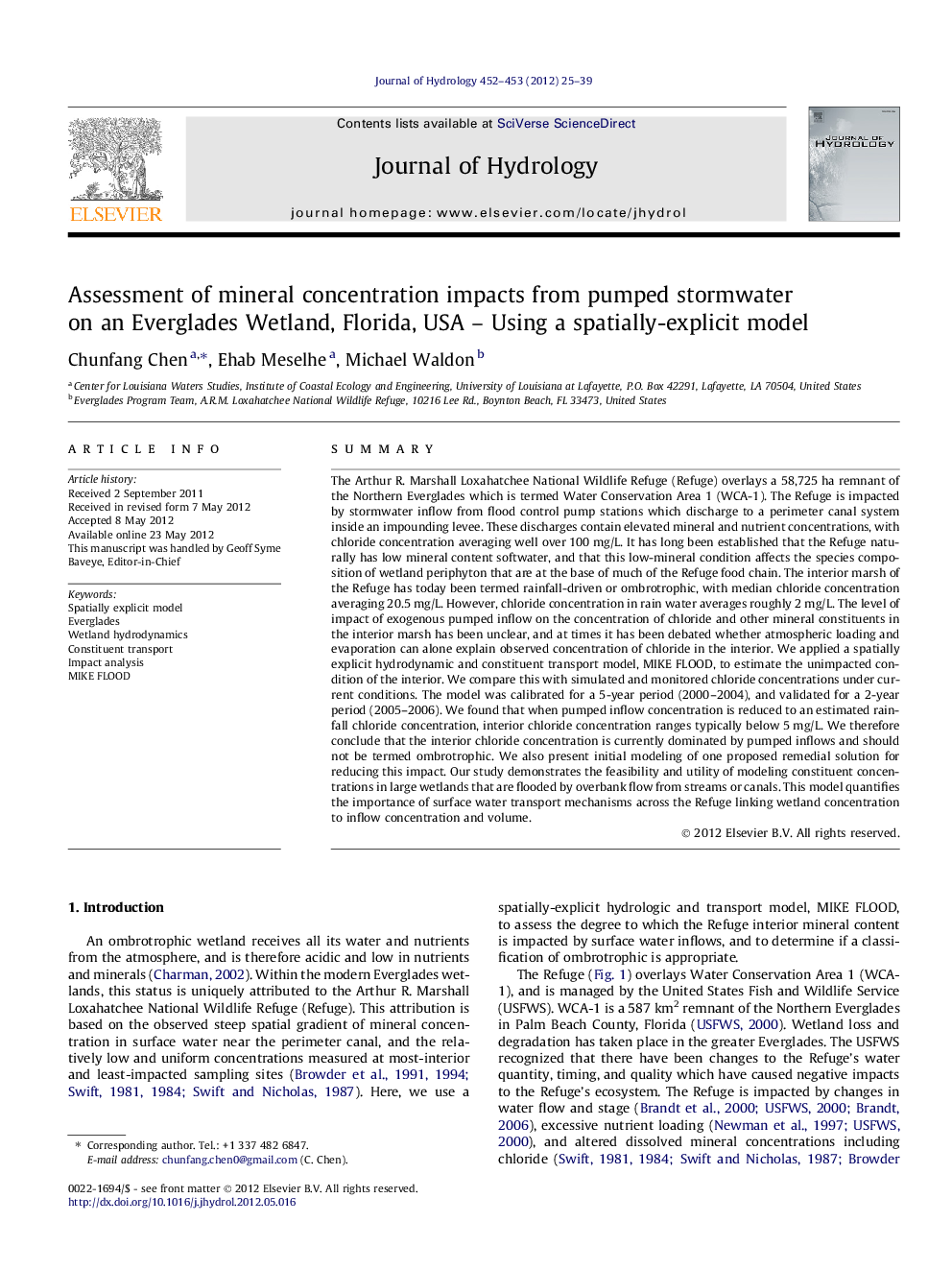| Article ID | Journal | Published Year | Pages | File Type |
|---|---|---|---|---|
| 6413952 | Journal of Hydrology | 2012 | 15 Pages |
SummaryThe Arthur R. Marshall Loxahatchee National Wildlife Refuge (Refuge) overlays a 58,725Â ha remnant of the Northern Everglades which is termed Water Conservation Area 1 (WCA-1). The Refuge is impacted by stormwater inflow from flood control pump stations which discharge to a perimeter canal system inside an impounding levee. These discharges contain elevated mineral and nutrient concentrations, with chloride concentration averaging well over 100Â mg/L. It has long been established that the Refuge naturally has low mineral content softwater, and that this low-mineral condition affects the species composition of wetland periphyton that are at the base of much of the Refuge food chain. The interior marsh of the Refuge has today been termed rainfall-driven or ombrotrophic, with median chloride concentration averaging 20.5Â mg/L. However, chloride concentration in rain water averages roughly 2Â mg/L. The level of impact of exogenous pumped inflow on the concentration of chloride and other mineral constituents in the interior marsh has been unclear, and at times it has been debated whether atmospheric loading and evaporation can alone explain observed concentration of chloride in the interior. We applied a spatially explicit hydrodynamic and constituent transport model, MIKE FLOOD, to estimate the unimpacted condition of the interior. We compare this with simulated and monitored chloride concentrations under current conditions. The model was calibrated for a 5-year period (2000-2004), and validated for a 2-year period (2005-2006). We found that when pumped inflow concentration is reduced to an estimated rainfall chloride concentration, interior chloride concentration ranges typically below 5Â mg/L. We therefore conclude that the interior chloride concentration is currently dominated by pumped inflows and should not be termed ombrotrophic. We also present initial modeling of one proposed remedial solution for reducing this impact. Our study demonstrates the feasibility and utility of modeling constituent concentrations in large wetlands that are flooded by overbank flow from streams or canals. This model quantifies the importance of surface water transport mechanisms across the Refuge linking wetland concentration to inflow concentration and volume.
⺠The model integrates a 1-D channel model with a 2-D gridded marsh model. ⺠Daily stage and long-term average chloride concentration are well simulated. ⺠Simulating regulatory outflows allows testing scenarios that do not apply historic flows. ⺠Calibrating chloride concentration assisted in fine tuning the hydrodynamic calibration. ⺠Even at the most isolated interior sites chloride largely result from pumped inflows.
